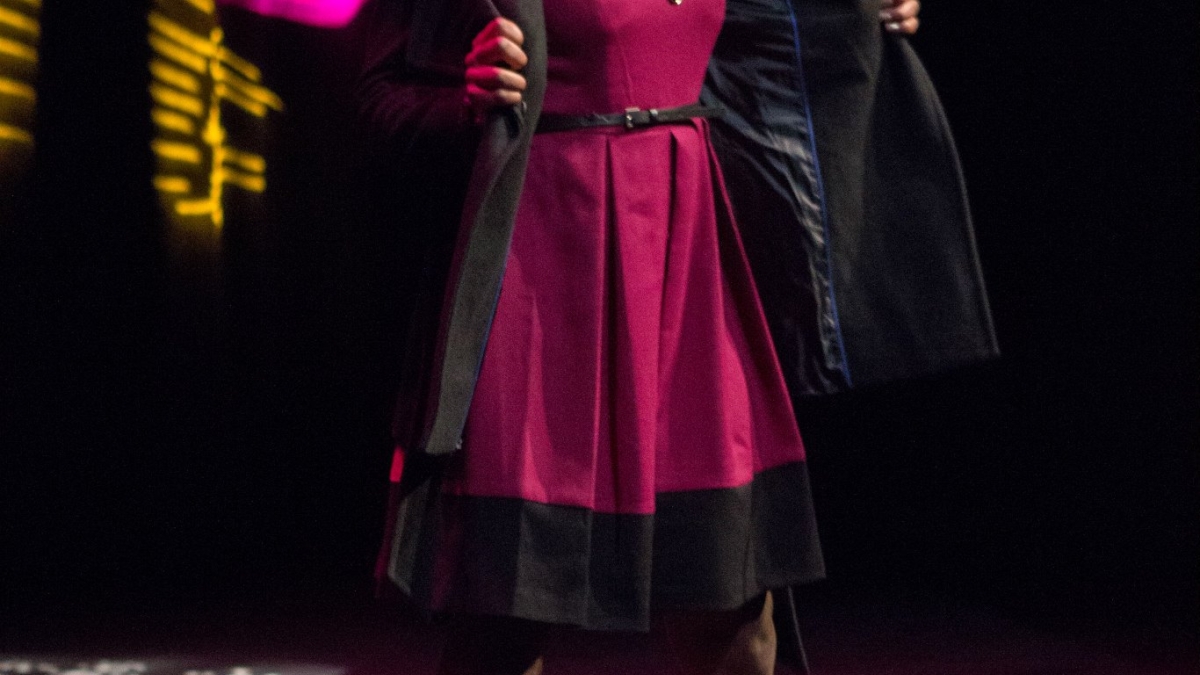Event aims to empower women through body acceptance

The stage at Galvin Playhouse will turn into a runway this Friday with the fifth Sun Devils Wear Prada event.
But it’s more than just a fashion show; the club of the same name worked with an Arizona State University psychologist to show how beauty isn’t just skin deep.
The club’s mission statement to inspire ASU women to reveal self-worth through personal style is shown at their club meetings and their fashion event.
This year’s show theme of “everyBODY beautiful” was partly inspired by their involvement with The Body Project at ASU, a program designed to teach women about body acceptance.
“The Body Project definitely changed the way we thought about the way we’re organizing the show,” said Brenna Goodwin, president of Sun Devils Wear Prada and a junior psychology student. “Our core values totally align, and that’s what we want our show to be all about this year.”
The Body Project, offered at 100 universities, also trains undergraduate women to become peer leaders in body acceptance. Body acceptance is often at the core of a range of issues that pertain to women, according to Marisol Perez, founder of the Body Project at ASU and associate psychology professor.
“We find that women won’t take risks or put their name up for leadership roles because there is fear of judgment of how they look,” Perez said.
Perez talks about the “thin ideal,” the ideal woman according to society’s standards, in her sessions. She has participants think about how much time and money they invest in makeup, beauty products, shoes and clothes to meet the standard.
“If you wear makeup, great, but don’t feel unattractive when you don’t wear makeup,” Perez said. “When you ask those questions, you realize how much of our lives are dictated because we don’t feel good enough. We’re not saying change, but we want it to be more of a choice.”
Community and resident assistants at ASU residence halls are required to go through the training. The Body Project is presented in a different residence hall every month on one of the four campuses. Eventually Perez said the goal is to have all first-year undergraduate women attend the program and expand to high school and middle school campuses.
Since its launch in fall 2014, almost 1,000 college-aged women participated in the program, which consists of two sessions that last two hours. Some Sun Devils Wear Prada officers and advisers contacted Perez about a partnership and went through the sessions.
“I loved the idea,” Perez said. “With Sun Devils Wear Prada, we want to support clubs and any activities geared toward women and [that] are a body positive event.”
Senior Ellyse Crow, a community assistant for the W. P. Carey School of Business and officer of Sun Devils Wear Prada, said the experience was eye opening.
“It’s important because every day we’re bombarded by messages of ‘This is beautiful. This is what we need out of you. This is what you’re expected to look like,’” Crow said. “It was cool being able to do that and see how big it was, and be able to see how to combat that.”
Goodwin said participating in The Body Project helped her see how natural it is for women to put themselves down. The club’s purpose for the event is for every woman to realize she is beautiful. In addition to a fashion show, style expert Shari Braendel, author of “Good Girls Don’t Have to Dress Bad,” will talk about style tips and tricks that will help highlight every woman’s natural beauty.
“That’s what we’re trying to do together – Sun Devils Wear Prada and The Body Project – is take the pressure off of girls,” Goodwin said. “The truth is you’re beautiful the way you are, and your value doesn’t come from what you look like or what people say about you or anything. You’re valuable because you’re you and you exist.”
Written by Alicia Canales